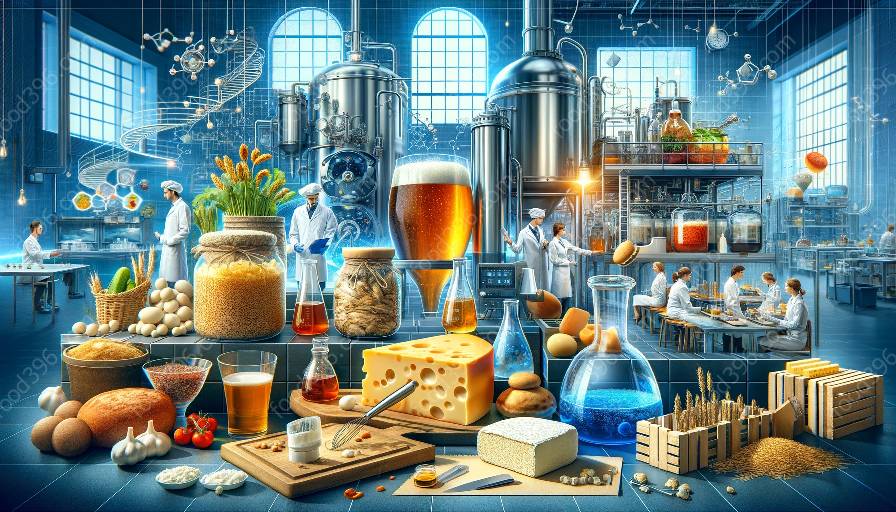Fermentation is an age-old process that relies on the activities of a myriad of microorganisms to transform raw ingredients into a wide array of food and drink products. In this topic cluster, we will delve into the captivating world of these microorganisms involved in fermentation, exploring their roles, diversity, and significance in fermentation science and the production of delicious consumables.
The Magic of Fermentation
Fermentation is a metabolic process in which microorganisms, such as bacteria, yeast, and molds, facilitate the conversion of organic compounds, typically sugars, into alcohol, acids, or gases. This transformative process contributes to the preservation, flavor enhancement, and nutritional enrichment of various food and beverage products.
Diverse Microorganisms in Fermentation
Bacteria: Lactic acid bacteria, including species such as Lactobacillus and Lactococcus, play a vital role in the fermentation of dairy products, vegetables, and sourdough bread. They convert sugars into lactic acid, contributing to the tangy flavor and extended shelf life of these products.
Yeast: Saccharomyces cerevisiae, known as baker's yeast, and other yeast species are pivotal in the fermentation of beer, wine, and bread. They metabolize sugars to produce alcohol and carbon dioxide, lending characteristic flavors and textures to the final products.
Molds: Certain molds, such as Aspergillus, are utilized in the fermentation of diverse food items, including soybeans for soy sauce, miso, and tempeh. These molds break down proteins and carbohydrates, resulting in distinct umami flavors and valuable nutrients.
The Art and Science of Fermentation
Fermentation science encompasses a multidisciplinary approach, integrating microbiology, biochemistry, and food technology, to understand and optimize the fermentation process. By harnessing the activities of specific microorganisms, fermenters can manipulate factors such as temperature, pH, and oxygen levels to achieve desired outcomes in food and beverage production.
Bioactive Compounds and Health Benefits
Microorganisms involved in fermentation not only transform raw materials but also generate bioactive compounds with potential health benefits. Examples include probiotics, which are live beneficial bacteria found in fermented foods like yogurt and kimchi, supporting digestive health and immune function.
Fermented products also serve as rich sources of enzymes, vitamins, and antioxidants, contributing to the overall nutritional quality of the diet. Furthermore, fermentation can mitigate the presence of antinutrients and enhance the bioavailability of essential nutrients in certain foods.
Exploring the Future of Fermentation
The field of fermentation science continues to evolve, driven by advancements in biotechnology, genetic engineering, and microbial ecology. Innovations in fermentation techniques, such as controlled fermentations, starter cultures, and bioreactor systems, are revolutionizing the production of diverse fermented foods and beverages.
Additionally, the exploration of novel microorganisms, including extremophiles and probiotic strains, presents opportunities to expand the repertoire of fermented products and unlock new health-promoting properties.
Conclusion
The intricate interplay between microorganisms and fermentation is fundamental to the creation of an extensive array of delightful and nourishing food and drink products. Through harnessing the power of microorganisms, we can unravel the mysteries of fermentation science, preserve culinary traditions, and pave the way for innovative gastronomic experiences and nutritional advancements.

